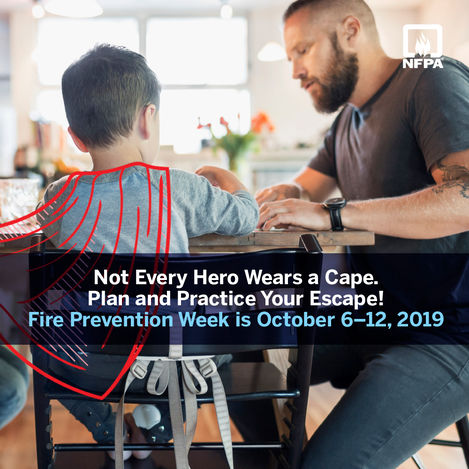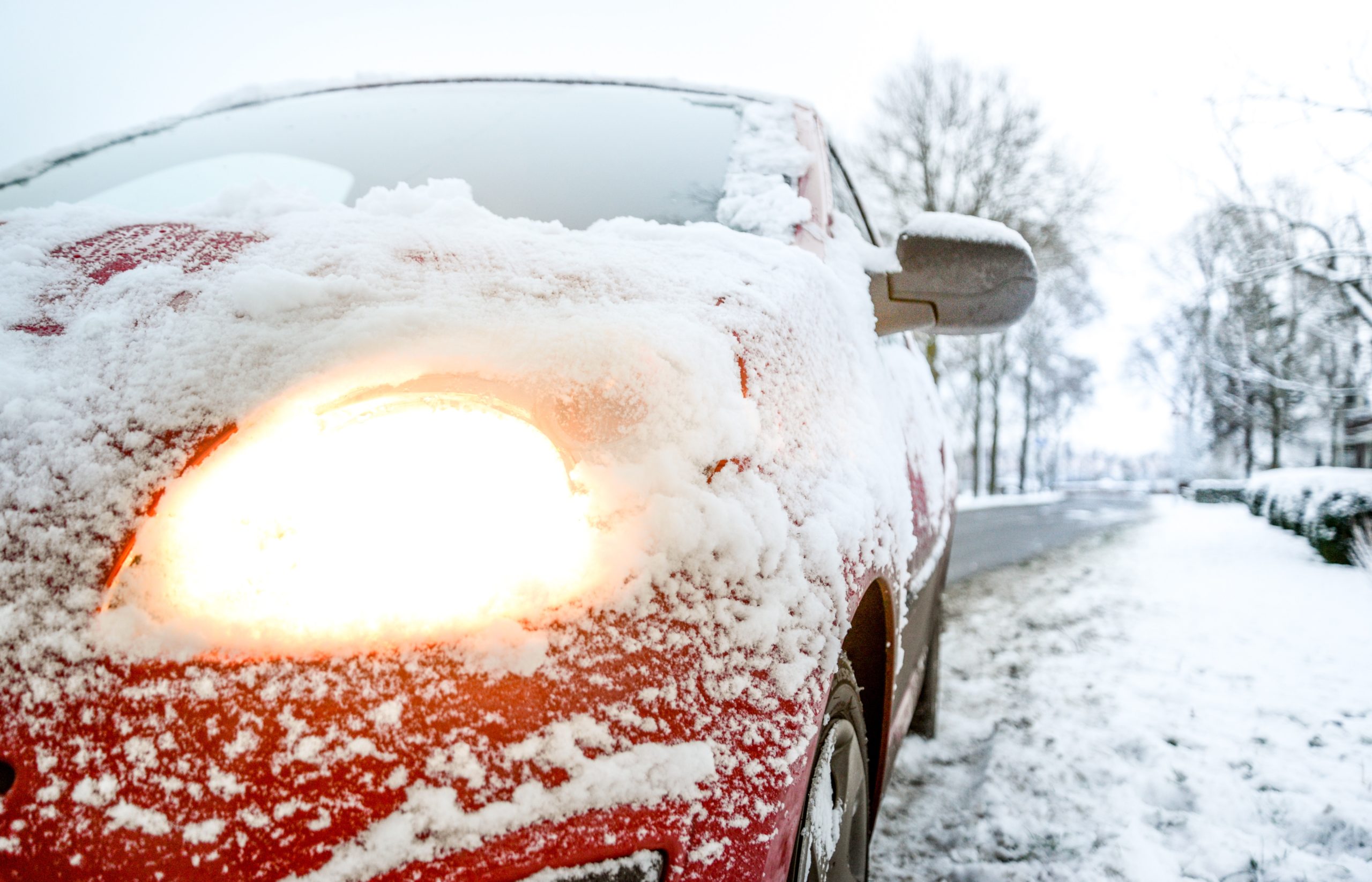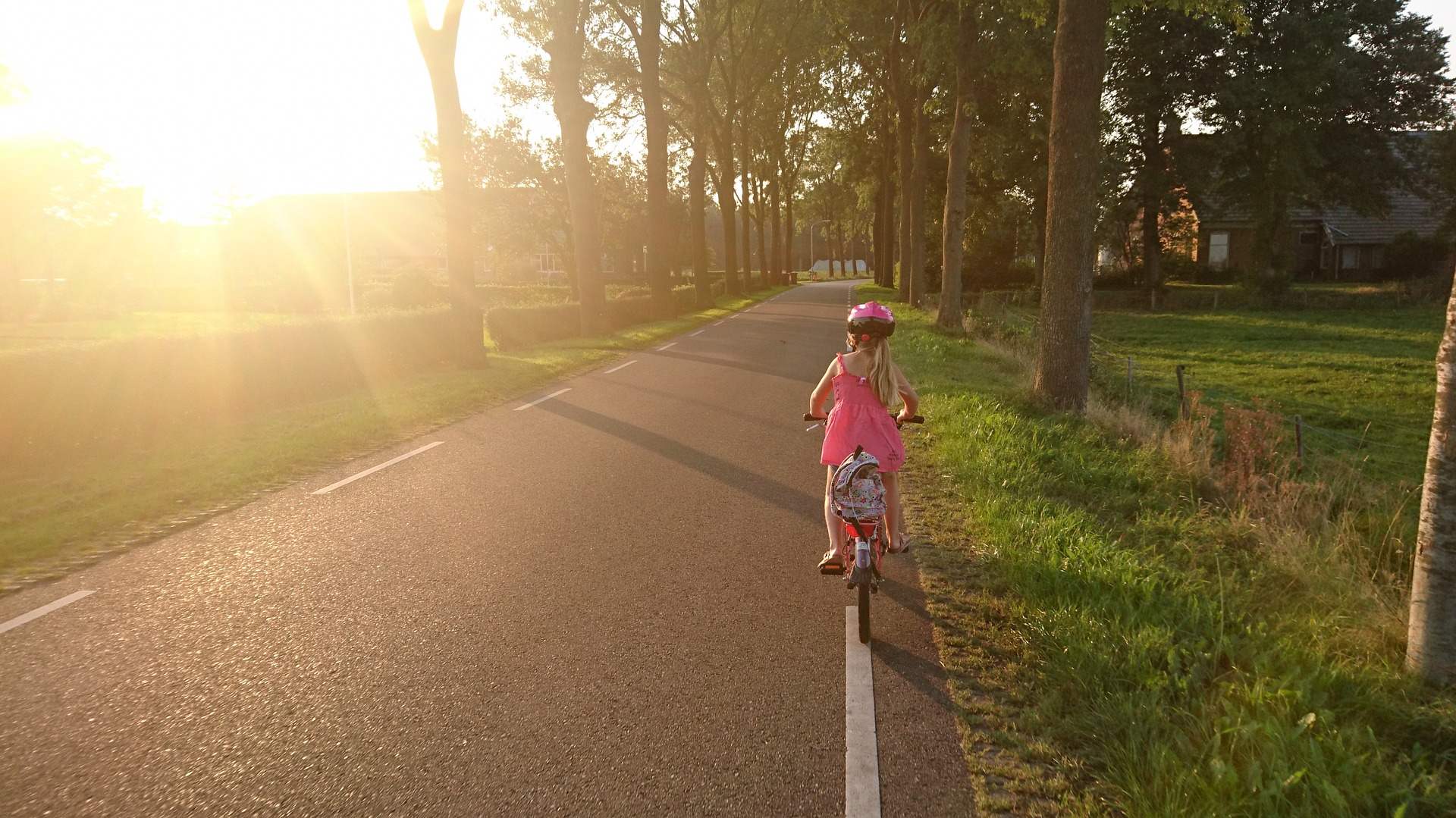Complete Guide to Car Seat Safety for Maximum Child Protection
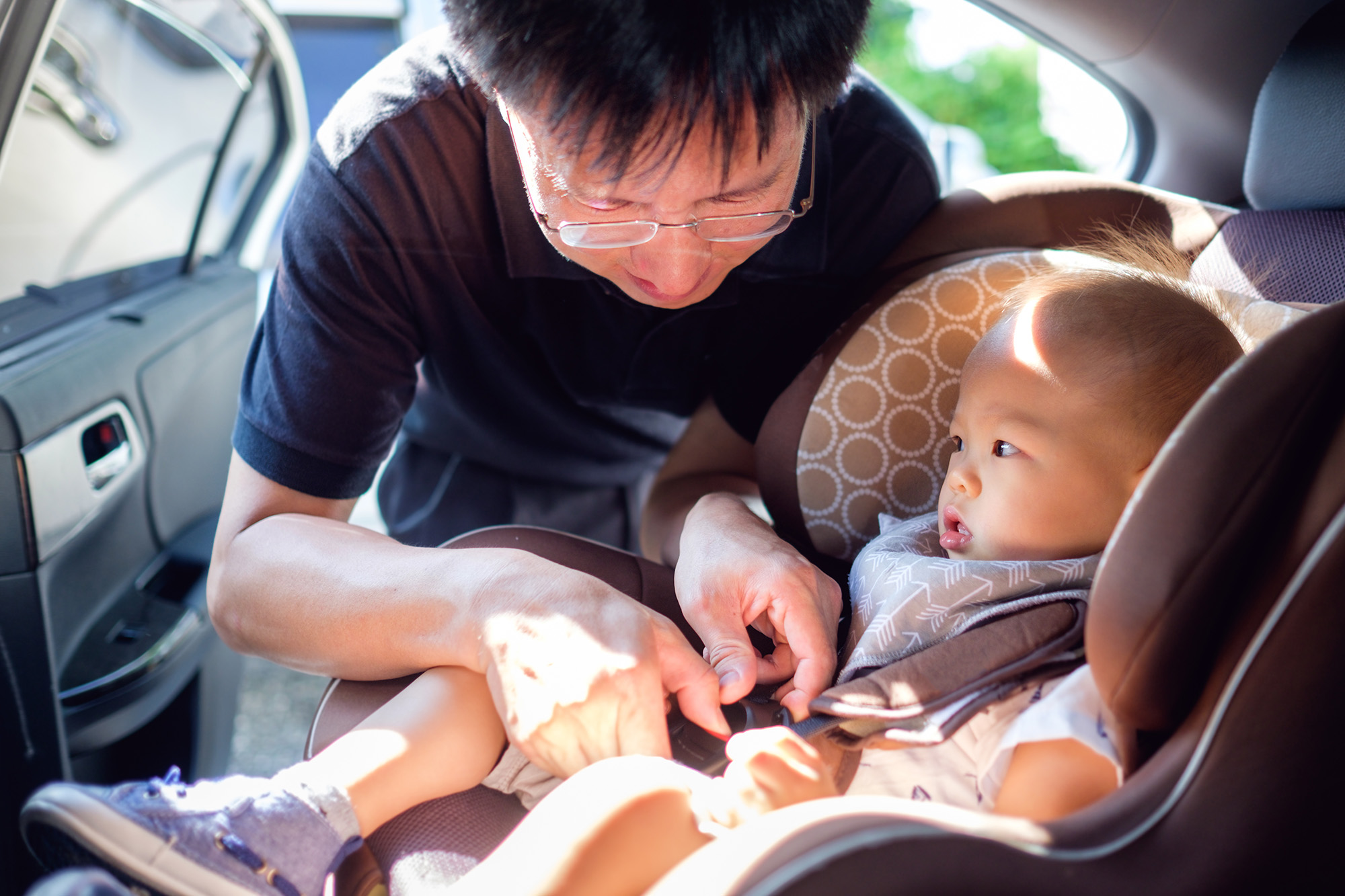
Ensuring the safety of your child is critical, especially when it comes to traveling in a vehicle. One of the most critical measures you can take to protect your child during car rides is selecting, installing, and using an appropriate car seat. This article explores the different types of car seats, key factors to consider when choosing a car seat, installation techniques to consider* and how to securely buckle up your child for maximum protection.
*always refer to your vehicle manual AND car seat manual prior to car seat installation.
Types of Car Seats
When it comes to car seats, there are several types to choose from based on your child’s age, weight, and height. Understanding the different options will help you make the best decision:
- Infant Car Seats: Designed for newborns and infants, these rear-facing seats provide crucial support for a baby’s fragile head, neck, and spine. These car seats provide convenience for families with infants as the car seat carrier is removable from the car seat base for easing infant toting. Although the seats are removable, infants should only be in car seats when it is properly installed in the traveling vehicle. Allowing an infant to sleep in their car seat outside a vehicle or keeping them in a car seat for containment is dangerous and can lead to “container baby syndrome” or to airway restriction and death. Most infants outgrow their infant seat by their first birthday.
- Convertible Car Seats: These seats can be used in both rear-facing and forward-facing positions, accommodating children from infancy to toddlerhood. It’s recommended to keep children in a rear-facing position for as long as possible up to the seat’s weight or height limits. Depending on size and car seat limits, some kids can rear-face until age 6 or 7. The seat would then be installed forward facing for the child, until the forward-facing weight or height limits are reached. (Important Note: Your state may have minimum age or weight laws required before you turn your child forward-facing, but you should max out the seat’s limits for safety).
- Booster Seats: Suitable for older children who have outgrown their forward-facing seats weight or height limits. Booster seats position the child correctly to use the vehicle’s seat belts safely. There are high-back and backless booster seat options. to choose from, depending on your child’s height and weight. Do not switch to a booster seat until forward facing car seat limits are reached. Booster seats typically have a minimum required weight of 40 pounds. Reaching the minimum weight or entering a specific grade in school is not a reason to switch to a booster as children need to be mature enough to use a booster seat safely for the entire car ride.
- All-in-One Car Seats: These seats are designed to accommodate infants, toddlers, and older children in various positions. They can be used as rear-facing seats for infants and toddlers, forward-facing seats for older children, and eventually as booster seats for older and mature children. All-in-one car seats provide convenience and longevity. However, this may not be the best purchase as you can’t predict how your child will grow and you may be unable to use all the features in the seat before your child outgrows it or the car seat expires. Additionally, you may want to take advantage of new car seat technology as your child ages.
Factors to Consider when Choosing a Car Seat
Selecting the right car seat requires careful consideration of the following factors:
- Safety Standards: All car seats sold in the United States must meet minimum federal safety standards. Some car seats offer extra safety features that may be important to your family. It is important to register any seat purchased to get recall notices about your car seat. Be sure to purchase car seats from reliable stores or internet sites to avoid counterfeit seats.
- Age, Weight, and Height: Ensure the car seat is appropriate for your child’s age, weight, and height. Not every car seat will work for every child. Refer to the manufacturer’s guidelines to determine the suitable range.
- Ease of Use: Choose a car seat that is user-friendly and compatible with your vehicle. Consider how many seats in your vehicle allow car seat installation and the configuration of the rest of your passengers. You may need narrow car seats to fit three across in your back seat safely. Check if the seat has clear instructions and is easy to adjust and install in your specific vehicle.
- New or Used Car Seat?: Car seats typically have a long life (you can check the expiration on your specific car seat) and can be reused for your own children as long as they were not in an accident. We don’t recommend used car seats from others unless you know how the car seat was used and that it was not in a vehicle crash. We recommend avoiding online resales.
- Travel Car Seat: Do you use ride shares or airplanes? You may consider a car seat that is quick to install with a seat belt, or that is easy to carry through an airport to install on the plane and in a vehicle after you reach your destination.
- Crash Test Ratings: Investigate the car seat’s performance in crash tests conducted by organizations like the National Highway Traffic Safety Administration (NHTSA) or the Insurance Institute for Highway Safety (IIHS).
Proper Car Seat Installation:
Installing the car seat correctly is crucial to its effectiveness in protecting your child. While installation methods may vary based on the car seat type and vehicle, consider the following general tips:
- Read the Car Seat Manual: Thoroughly read and understand the car seat manufacturer’s instructions before installation. Each seat has specific guidelines that should be followed precisely. Most car seat manufacturers also provide online video instructions if you need more help. Some companies also provide phone and video support. Before beginning installation of the car seat into the vehicle, check to see if the harness and/or crotch strap needs to be adjusted. Car seats are installed with either a LATCH system or seat belt installation. Do not use both methods at the same time unless your car seat allows both methods at once (most do not allow both methods simultaneously).
- LATCH System: The Lower Anchors and Tethers for Children (LATCH) system provides an easy and secure way to install car seats. Most vehicles and car seats manufactured after September 2002 are equipped with LATCH. Refer to both the car seat and vehicle manuals to properly use the LATCH system. Not all seat locations with have LATCH. Only use the LATCH for the seat where the car seat will be installed and do not “borrow” from adjacent seat locations. The LATCH system has a weight limit. Make sure you do not exceed the LATCH limits of your car seat. This can be found in the car seat manual. Most seats require you to use the seat belt installation method if your child is over 35 pounds. Make sure the car seat recline angle is correct per manufacturer’s instructions.
- Seat Belt Installation: It is important to check your car seat manual to learn when seat belt installation must be used. Your car seat will not support the LATCH system beyond a certain child weight, you may not have LATCH anchors in all back row seat positions, or it may be an easier installation to use the seat belt installation. Closely follow the manufacturer’s instructions for installing the seat using the seat belt. Ensure the seat belt is threaded correctly through the correct belt path (note: On Convertible or all-in-one car seats this is a different path depending on if the car seat is installed backward-or-forward facing). Make sure the car seat recline angle is correct per manufacturer’s instructions. Follow the manufacturer’s instruction for locking off the seatbelt.
- Forward Facing Tether: If your child is forward facing in a convertible car seat, you must use the tether of the car seat for proper installation. A tether attaches to your vehicles’ tether anchors. Not all vehicle seat positions have tether anchors. Make sure to check your vehicle manual for tether positions. This keeps your child’s car seat from tipping forward which is critical for a safe installation. This infographic from SafeKids.org gives a good overview of the importance in using your vehicles tethers correctly.
- Other Checks: Ensure the car seat’s recline angle, headrest, and any additional features are appropriately adjusted for your child’s comfort and safety.
- Extras: Do not use ANY car seat after-market parts with, on, or under your car seat. Some manufacturers sell specific parts tested to use with their car seats. However, other components are not tested, and therefore not safe.
- Verify Installation: After installation, give the car seat a firm tug at the belt path to ensure it is tightly secured. Check for minimal movement (Less than 1-inch) from the belt bath from front to back and side to side. Here is a car seat installation video of what this 1-inch test looks like. If you are still having trouble, look in your area for certified Child Passenger Safety technician (CPST). These technicians make sure your car seat is the right fit for your child and properly installed. Communities often hold car seat safety events offering this service.
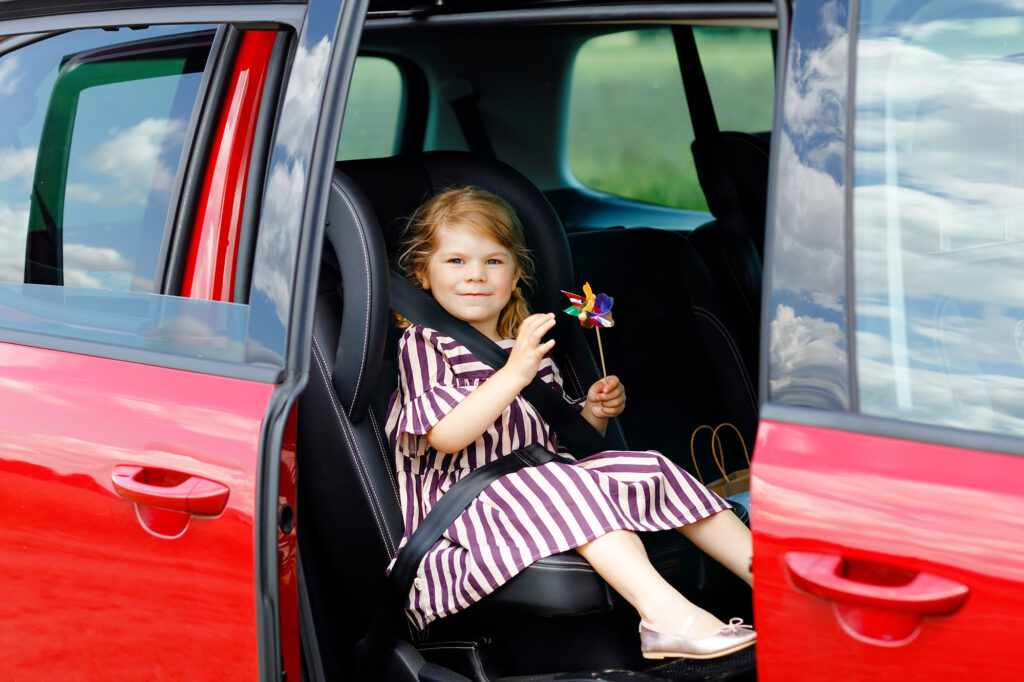
According to the National Highway Traffic Safety Administration, 46% of booster seats and car seats are used incorrectly.
Properly Securing Your Child
To ensure your child is securely strapped in the car seat, follow these essential steps:
- Harness Adjustment: Adjust the harness straps according to your child’s size, ensuring they lie flat and snugly against their body. For rear-facing seats, the straps should start from below the child’s shoulders, while in forward-facing seats, the straps should begin above the shoulders.
- Chest Clip Positioning: The chest clip keeps the straps from sliding off your child’s shoulders. Place the chest clip at armpit level, centered over your child’s chest. Ensure it is not too high or too low, as incorrect positioning can affect the effectiveness of the harness.
- Tightness Check: After securing your child, perform a pinch test on the harness straps. If you can pinch any excess webbing, the straps are too loose. Adjust and tighten them until they fit snugly against your child’s body. If you child’s straps are too loose, it can cause infants to slip into the wrong position, causing airway restriction and death. In the event of an accident, loose straps would allow your child’s body to project forward into the loose strap “space” which can cause serious injury. Never put your child in a car seat wearing a winter coat or thick clothing, which can prevent the straps from getting a tight fit.
- Final Checks: Ensure the car seat’s recline angle, headrest, and any additional features are appropriately adjusted for your child’s comfort and safety.
- Car Accidents: If you are in a car accident with car seats installed in your car (with or without a child), they will likely need to be replaced. Check with your car seat manufacturer details on replacement after an accident.
Choosing, installing, and using a car seat properly is vital for providing maximum protection to your child during car rides. By understanding the various types of car seats, considering essential factors, following correct installation procedures, and properly securing your child with snug harness straps and a correctly positioned chest clip, you can significantly enhance their safety on the road. Remember to always refer to the car seat manufacturer’s guidelines and your vehicle’s manual for specific instructions and recommendations. Prioritize your child’s safety, and enjoy peace of mind while traveling together.
If your child has been injured in an accident, you may need to talk to a personal injury attorney near you to find out about your options. At Onward Injury Law, we provide a free case review and will answer your questions.

